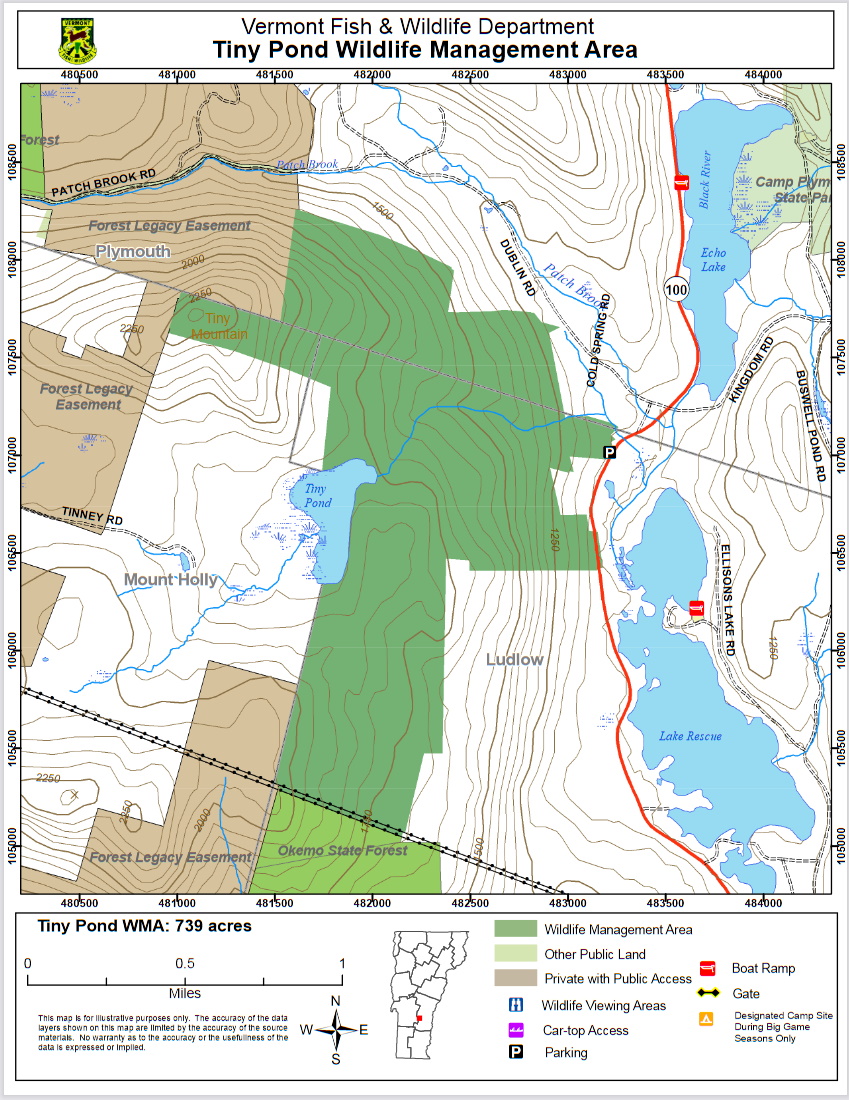Tiny Pond WMA
Birds of Interest
The pond and forests are a good place to see a variety of bird species from songbirds to waterfowl. Tiny Pond is sometimes visited by waterfowl such as black, wood, and mallard ducks. Herons and red-winged blackbirds can be seen in the marsh. The common loon, which is a State-endangered species, has been observed here. Loons are sensitive to disturbance so please keep a respectful distance.
The hardwood forest contains pileated woodpeckers, northern flickers, rose-breasted grosbeaks, red-eyed vireos, black-and-white warblers, and American redstarts. The distinct call of the barred owl might be heard in the red spruce-hemlock forests. Cedar waxwings, chestnut-sided warblers, brown thrashers, and gray catbirds are found along the forest edge. Ruffed grouse and woodcock are present on the WMA in limited numbers. Red-tailed hawks may be seen soaring in the area.
About this Location
Tiny Pond Wildlife Management Area (WMA) is a 739-acre parcel owned by the State of Vermont and managed by the Vermont Fish & Wildlife Department. The majority of the WMA, 517 acres, is located in the town of Ludlow; there are 174 acres in Plymouth and 48 acres in Mount Holly. The WMA can be accessed from Route 100 which runs close to its eastern side. Tiny Pond WMA is part of the Coolidge West Management Unit, which includes Coolidge State Forest (west of Route 100) and Plymsbury WMA.
The WMA is known for its scenic beauty. Tiny Mountain is a 2,320-foot peak located in Mount Holly on the northwestern corner of the parcel. Tiny Pond, for which the WMA is named, is a remote and unspoiled lake that covers 30 acres and is ¾ of a mile long. It borders the southwestern corner of the WMA and has no road access or development. Please be careful not to transport any invasive plants, such as milfoil, into the pond. Tiny Brook is a beautiful cascading brook that drains the pond and traverses the WMA. There are marshlands associated with
the pond and brook.
The area is forested primarily with northern hardwoods, such as red and sugar maple, yellow birch, and beech. There are also red spruce-northern hardwood forests and red spruce-hemlock forests on the property.
Vernal pools are good places for spotting amphibians. They can be found in the forest during the spring and early summer.
Features
Restrooms on site
Wheelchair accessible trail
Entrance fee
Content from Tiny Pond Wildlife Management Area guide and map
Last updated October 8, 2023
